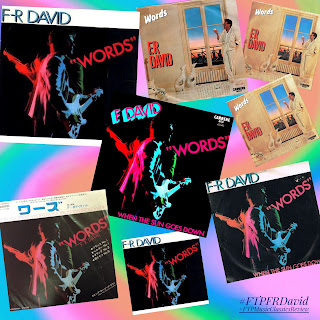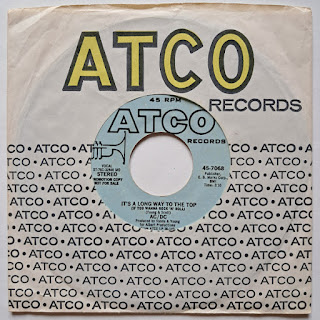F. R. DAVID - WORDS
Llançament: novembre de 1982
Posició a les llistes: Regne Unit: #2 | EUA: #62
“Words” és una balada europop gravada pel cantant i compositor francès F. R. David el 1982. La música va ser escrita per David, mentre que la lletra la van escriure Sandy Deanne i Marty Sanders, exmembres de Jay and the Americans. La cançó va ser un èxit massiu a Europa, assolint el número 1 a Bèlgica, Àustria, Finlàndia, Dinamarca, Itàlia, Irlanda, Espanya, Portugal, Noruega, Suècia, Suïssa i Alemanya. Al Regne Unit, va arribar al #2, just darrere de True de Spandau Ballet. Als Estats Units, malgrat vendre força bé, no va aconseguir gaire reproducció a la ràdio, fet que va fer que es quedés en el #62 del Billboard Hot 100.
Elli Robert Fitoussi, més conegut pel seu nom artístic F. R. David, és un artista de pop francès, nascut a Tunísia el 1947. Va començar la seva carrera als anys 60, tocant en diverses bandes franceses, abans d’endinsar-se en el prog rock com a guitarrista de Vangelis durant els anys 70. Va assolir l’èxit com a solista amb el seu single debut, “Words”. Tot i ser un èxit mundial, la cançó el va encasellar com a baladista, cosa que va perjudicar la seva carrera com a artista de synth pop. Va llançar tres àlbums als anys 80, però cap va aconseguir entrar a les llistes. Això el va portar a retirar-se del focus mediàtic i a treballar com a compositor per a altres artistes. El seu últim àlbum, “Midnight Drive”, es va publicar el 2013.
F. R. DAVID - WORDS
Released: November, 1982
Charts: UK: #2 US: #62
“Words” is a Europop ballad recorded by French singer-songwriter F. R. David in 1982. The songs music was written by David, with the lyrics by former Jay and the Americans members, Sandy Deanne and Marty Sanders. The song was a massive hit throughout Europe, topping the charts in Belgium, Austria, Finland, Denmark, Italy, Ireland, Spain, Portugal, Norway, Sweden, Switzerland and Germany. When released in the UK, it hit #2 behind Spandau Ballet's “True”. In the United States, the song sold well, but couldn’t get a lot of airplay, causing it to stall at #62 on the Hot 100.
Elli Robert Fitoussi, better known by the stage name of F. R. David, is a French synth pop artist born in French Tunisia in 1947. He started off in the 1960s with a range of French bands, before drifting into prog rock as guitarist for Vangelis in the 1970s. He gained success as a solo artist with his debut single, “Words”. A massive worldwide seller, it pigeonholed David as a balladeer, effectively killing his career as a synth pop artist. Three albums, all released in the 1980s failed to chart, and David left the spotlight to move behind the scenes as a songwriter for other acts. His last album, “Midnight Drive” was released in 2013. (Mozz Osborne)

































